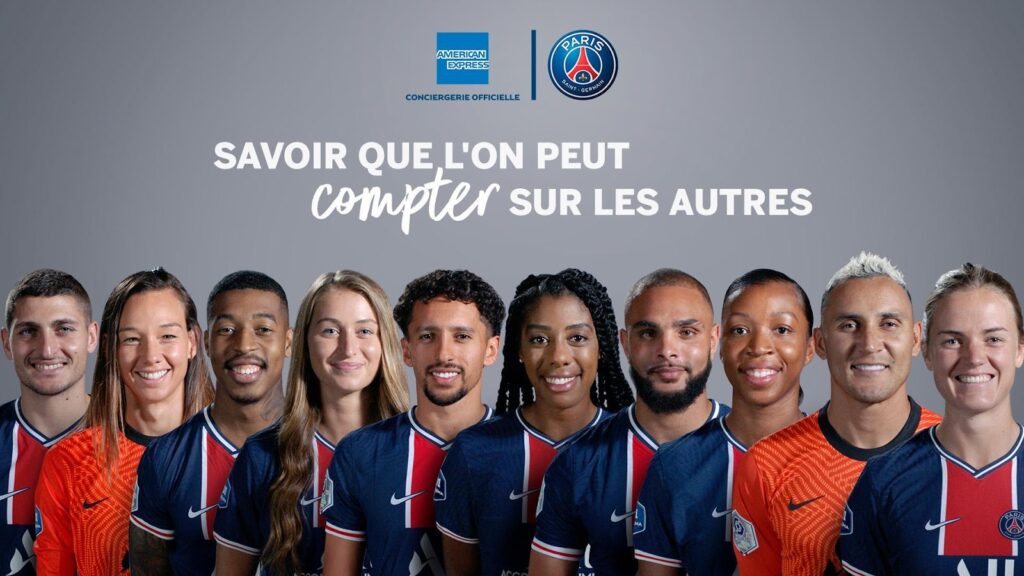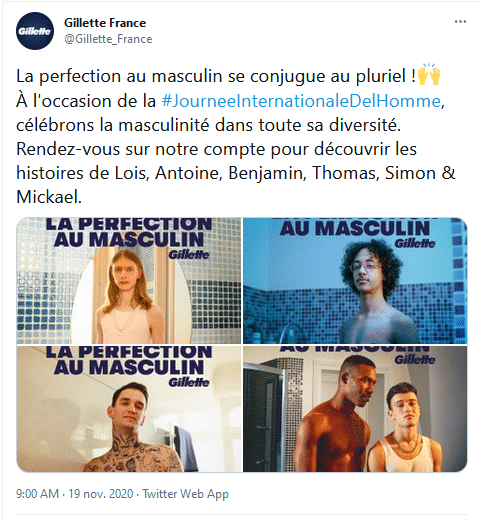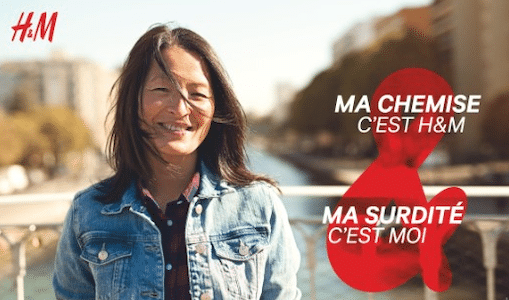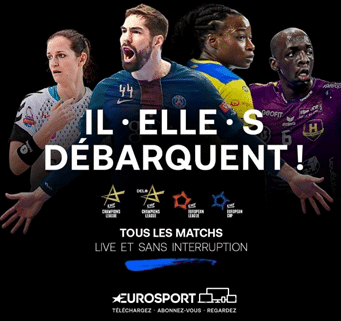French is one of the world’s most widespread languages, with immense cultural and political influence. This power makes it especially important for French marketers and content creators to prioritize inclusivity—an essential aspect of all written content today.
At VeraContent, we often take on writing, translation and social media projects in French. As such, we decided to develop a French version of our inclusive tone and style guide, to complement our guides for English and other European languages.
One of the main challenges we encountered when developing this guide was the prevalence of gendered words and grammatical structures in French.
In this blog post, we’ll explore some recent developments and efforts to make the language more gender inclusive. We’ll also explain some strategies that writers and marketers can employ in our work—as well as why we should do so. Allons-y!
A bit of cultural context
In the last decade, France has undergone critical social and political changes. In 2013, gay marriage was legalized. In 2015, new regulations were adopted to make public and private facilities more accessible to people with disabilities. And in 2020, the Black Lives Matter movement inspired many French citizens to publicly protest racial injustice.
Throughout the 2010s, gender equality initiatives also proliferated. The #metoo movement gained traction in France as #balancetonporc, and French law enforcement agencies upped their efforts to protect women from domestic violence.
Many of these changes have been inspired by global movements. But every global movement develops within different country-specific contexts, and it’s important to take those contexts into account as we explore their effects on language and culture.
See also: How social movements and global events are changing language in 2020
Inclusive marketing in France
It’s becoming more and more common for brands around the world to aim for inclusive marketing and promotional campaigns. The strategy and pace of these efforts, however, varies greatly from country to country.
Marketers in France have been launching more inclusive initiatives in recent years, particularly in terms of gender. For example, in November 2020, American Express and Paris Saint-Germain Football Club created a campaign featuring both male and female players.

Around the same time, Gillette France launched a campaign to celebrate masculinity in all its forms, including the LGBTQ+ community. It focused mostly on visuals, repeating the same slogan of “masculine perfection” to describe diverse expressions of gender.

Gender isn’t the only aspect of inclusivity, of course. A 2018 campaign by H&M in France showcased both its products and its commitment to employing people with disabilities. The ads below highlight this effort while also promoting the company’s clothes.


By making an effort to highlight different genders, expressions of gender, and disabilities in their marketing strategies, all of these brands took a meaningful step toward inclusivity.
There are plenty of reasons why brands should get involved in social issues like the movement toward inclusivity. Not only is it the right thing to do ethically; it can also be a successful business strategy in France and around the world.
See also: 5 ways to ensure a quality localization – even if you don’t speak the language
An introduction to gender inclusivity in French
When implementing inclusive initiatives, linguistic choices are key. Seemingly insignificant differences in word choice or grammatical structure can make a huge impact on how each person perceives your message.
In French, this is especially true in terms of gender inclusivity. To understand why, let’s dive into some of the differences between French and English grammar.
When it comes to grammatical gender, English is a fairly flexible language. Most nouns are gender neutral, and there’s only one definite article (“the”) and indefinite article (“a/an”)—neither of which specifies gender. There’s also the pronoun “they,” which is becoming more widely accepted in its usage as a gender-neutral singular pronoun.
French is much more rigid in terms of grammatical gender. Even inanimate objects are gendered, and articles are either masculine (le, un) or femininine (la, une). There’s also no gender-neutral singular pronoun like “they”; the only options are il (he) and elle (she). Some people have started using iel, a combination of il and elle, but it hasn’t been officially accepted into the language yet.
Despite these limitations, however, French writers, marketers and activists have come up with several creative ways to make their language more gender-inclusive.

The evolution of French gender-inclusive language
The first big push toward linguistic gender inclusivity in French originated during World War I. According to The Atlantic, “Men went to war and left women behind to fill traditionally male-dominated positions like chimney sweep or factory worker. The nouns referring to those professions, which previously only had masculine versions, developed feminine ones.” In other words, the language adapted to changes in French society.
But, of course, the changes didn’t stop there. More recently, several strategies have emerged to make French more gender-inclusive. L’Académie Française, the highest authority on the French language, has decided to examine proposals for gender-neutral linguistic alternatives.
Although none of these proposals have been officially adopted yet, they’re all widely used in French society today.
1. Parentheses
This is considered to be the earliest tool for gender-inclusive writing in French. Instead of simply writing the default form of a word (which is almost always masculine), it involves adding the feminine form in parentheses immediately afterward.
In the example below, the feminine form is added to “you” in order to account for the fact that the reader could be either a man or a woman:
| English | Traditional French | Inclusive French |
| You’ll be in charge of organizing musical events. | Vous serez chargé d’organiser des évènements musicaux. | Vous serez chargé(e) d’organiser des évènements musicaux. |
This was a significant step forward, but many people have pointed out that the use of parentheses could be offensive. This punctuation is usually used for minor or supporting information, and therefore may symbolically diminish the importance of women.
2. The median-period
This is a more recent approach to gender inclusivity in French, which emerged in the late 2000s/early 2010s. Instead of placing the feminine grammatical form inside parentheses, it includes both the masculine and feminine forms separated by a dot, or interpunct—without prioritizing or diminishing the importance of either one.
Check out these examples for both the second person singular and the third person plural:
| English | Traditional French | Inclusive French |
| You’ll be in charge of organizing musical events. | Vous serez chargé d’organiser des évènements musicaux. | Vous serez chargé·e d’organiser des évènements musicaux. |
| Nurses have a critical role in this pandemic. | Les infirmières ont un rôle majeur dans cette pandémie. | Les infirmier·ière·s ont un rôle majeur dans cette pandémie. |
This option has become very popular and widely accepted in France. Big brands and media outlets have even started using it, greatly increasing its visibility among French audiences. For example, notice the median-period in this promotional poster from Netflix:

(“A series you won’t want to watch alone”)
Likewise, this Eurosport ad promotes both men’s and women’s teams in the Champions League with a gender-inclusive slogan:

The median-period isn’t a perfect solution, however. Some people have pointed out that it’s difficult to read for people with dyslexia, and it’s not compatible with auto-readers for visually impaired audiences. That said, it’s currently one of the best ways to ensure gender inclusivity in French text.
Note: The median-period is already easily accessible on certain keyboards, and the possibility of adding it on the standard French keyboard is also being discussed.
3. Non-gendered alternatives
Although new tools like the median-period are gaining ground, sometimes the best way to avoid alienating any readers is by avoiding gendered language altogether. It’s often possible to choose words that apply to all genders by default, or even rephrase the sentence to remove the issue.
For example, the following sentence could be modified to use the gender-neutral “responsable” instead of the gendered “chargé,” without changing its meaning:
| English | Traditional French | Inclusive French |
| You’ll be in charge of organizing musical events. | Vous serez chargé d’organiser des évènements musicaux. | Vous serez responsable d’organiser des évènements musicaux. |
Depending on the type of text you’re working with, it may be more or less easy to find non-gendered alternatives. This can be especially challenging when dealing with a short phrase or slogan (such as in the examples of median-period usage above).
Our approach to gender-inclusive language in French
At VeraContent, we prioritize inclusivity in all of our content. When it comes to French, we use the following system to ensure that our writing is as gender-inclusive as possible:
- Try to use gender-neutral language that naturally includes all gender identities.
- If there is no gender-neutral option, rephrase in order to avoid gendered language.
- When all else fails, use the median-period to address all genders.
Regarding all other forms of inclusivity, we refer to the inclusive tone and style guide that we’ve developed for French. We always give clients multiple options, explain our choices, and ensure that they’re happy with our chosen approach.
Note: When translating from or into French, we always try to stay as close to the target language as possible, while incorporating inclusive principles in a balanced way. If we believe that a certain part of the source text could be more inclusive, we’ll let the client know and offer recommendations for adjusting it.
The benefits of inclusive content
At first it might seem like creating inclusive content just means extra work. But in reality, taking the time to think critically about your writing and find alternative ways of expressing yourself will be an advantage.
Taking inclusivity into account often forces you to get creative, understand your audience, and consider the impact your content will have on the people who read it. After all, language has far more power than meets the eye—and it’s our responsibility as writers and content creators to use this power for good.
We’re committed to exploring all of these challenges and benefits as we help our clients make an impact in French-speaking markets. For us, inclusivity is more than just a box to check—it’s a guiding philosophy, a passion, and a reflection of how our words can change the world.
Do you have experience with inclusive language in French? A strong opinion on the median-period? Let us know in the comments!
For more insights into multilingual content and localization, check out:
- Content marketing in Spain vs. the US: 9 key differences
- US vs. German marketing content: Why localization is key
- 12 multilingual social media tips that really work
- Top 7 localization tools to optimize all your digital content
Check out our free interactive worksheet to adapt your brand’s content strategy to local markets:


